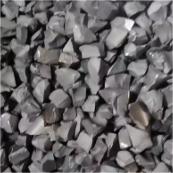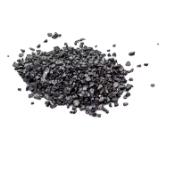**Title:** Forging Your Own Plate Metal Armor: A Modern Blacksmith’s Journey
(How To Make Plate Metal Armor)
**1. What Exactly is Plate Metal Armor?**
Forget flimsy chainmail shirts or stiff leather jerkins. Plate metal armor is the real deal. Picture solid sheets of steel shaped to hug the human form. Think knights in shining armor clanking across castle courtyards. That iconic look? That’s plate. It’s built from large, shaped metal plates protecting vital areas like the chest, back, arms, and legs. These plates connect using rivets or leather straps, allowing movement. It’s not just one big suit. It’s a system of carefully crafted pieces working together. The core idea is simple: use thick, hard metal to deflect blows. But making it work on a moving person? That’s the art. It demands precision shaping. You need to understand how metal bends, stretches, and holds its shape under stress. This isn’t costume play. True plate armor is serious protection, born from centuries of battlefield experience. It represents the peak of pre-gunpowder defensive technology, turning a warrior into a walking fortress.
**2. Why Bother Crafting Plate Armor Today?**
Knights jousting might be history, but making plate armor holds powerful appeal now. First, it’s the ultimate hands-on project. You learn metalworking skills few possess. Shaping cold, hard steel with heat and hammer is deeply satisfying. You feel a connection to ancient craftsmen. Second, it’s about customization. Want armor reflecting your unique vision? Build it yourself. Mass-produced stuff never fits perfectly. Crafting your own means armor moving *with* you, not against you. Third, it’s problem-solving. Every curve, every joint presents a challenge. Figuring it out builds real skill. Fourth, it’s pure historical immersion. Working the metal like a medieval smith brings history alive. You understand the effort behind every rivet. Finally, it’s about durability. A well-made steel suit lasts generations. It’s functional art. Whether for historical reenactment, display, or personal achievement, forging plate armor connects you to a powerful legacy. It proves human ingenuity and strength haven’t faded.
**3. How Do You Actually Make Plate Metal Armor?**
Making plate armor is demanding. You need focus, patience, and the right approach. Here’s the basic path:
1. **Design & Pattern:** Start simple. Sketch your piece – a basic breastplate or simple pauldron (shoulder guard). Draw it flat. Then, transfer that shape onto thick paper or cardboard. Cut this out. This is your pattern.
2. **Mark & Cut Metal:** Place your pattern onto sheet steel. Mild steel (like 16-gauge or 14-gauge) is good for beginners. Trace the pattern onto the metal. Use a sharpie or scribe. Cut the shape out carefully. A plasma cutter is fast, but an angle grinder with a cutoff wheel works. Wear safety gear!
3. **Shape the Metal (Dishing & Raising):** This is the core skill. You create curves. *Dishing* makes shallow depressions. Hammer the metal into a hollowed-out stump or sandbag. *Raising* builds curves outward. Hammer the metal over a rounded stake or anvil horn. Start gently. Work slowly from the edges towards the center. Heat the metal (annealing) with a torch when it gets too hard to hammer. This softens it. Repeat hammering and annealing. Patience is key.
4. **Refine & Smooth:** Once the basic shape is there, refine it. Use smaller hammers and different stakes. Smooth out hammer marks. Planish the surface for a cleaner look. Files and sandpaper (coarse to fine grit) help remove deep scratches and smooth edges. This takes time.
5. **Edge Rolling & Trimming:** Fold over the sharp edges of your plate. Hammer them down flat or roll them over a wire for a smooth, safe rim. Trim any excess metal for a clean finish.
6. **Holes & Assembly:** Drill holes for rivets or straps where needed. Use a center punch first to keep the drill bit from slipping. Test fit pieces together. Attach them using rivets or leather lacing.
7. **Finishing Touches:** Polish the steel to your desired shine (or leave it brushed). Apply a protective finish like oil or wax to prevent rust. Add leather straps and buckles for wearing.
Remember: Start small. A single elbow cop or knee guard teaches you the fundamentals before tackling a full breastplate. Safety is non-negotiable. Wear gloves, eye protection, and ear protection always.
**4. Where Does Plate Metal Armor Fit in the Modern World?**
Plate armor isn’t just gathering dust in museums. It has vibrant modern uses. Historical reenactment groups are the biggest fans. Fighters wear meticulously crafted suits for medieval battles (using safe, choreographed techniques). The weight, the movement, the look – it’s all about authenticity. LARP (Live Action Role-Playing) communities also embrace plate. It elevates a character, making fantasy warriors feel real. Movie and theater costume departments constantly need realistic armor. While mass production exists, custom pieces offer unique looks and perfect fits for lead actors. Collectors prize high-quality, hand-forged plate as art. Displaying a beautifully crafted suit commands attention. Some martial artists explore historical European martial arts (HEMA) in armor, studying the original fighting manuals. Even cosplayers tackling knight or paladin characters strive for accurate plate builds. Beyond that, learning armor-making skills feeds into broader metalworking, sculpture, and prop-making fields. The techniques are timeless.
**5. Plate Metal Armor FAQs: Your Burning Questions Answered**
Let’s tackle common questions head-on:
1. **What metal is best for starting?** Mild steel (1018 or A36) is affordable and easier to shape than hardened steels. Start with 16-gauge (about 1.5mm thick) for smaller pieces.
2. **Do I need a full forge?** Not necessarily. You can start with basic tools: hammers (ball-peen, planishing), an anvil or heavy steel block, a vise, an angle grinder, drills, files, and a propane torch for annealing. A dedicated forge is great but not essential for initial shaping.
3. **How thick should the steel be?** For functional reenactment armor, 14-gauge (about 1.9mm) to 12-gauge (about 2.6mm) mild steel is common for torso pieces. Thinner gauges (16-18) work for limbs. Thicker isn’t always better – it adds weight and is harder to shape.
4. **Is it very expensive?** Costs add up. Steel sheets, tools, consumables (grinding discs, drill bits), rivets, leather, and safety gear. Start small to manage costs. Building your tool collection over time helps.
5. **How long does it take to make a full suit?** This is a huge project. Expect hundreds of hours for a complete, well-made suit. A single piece like a helmet might take 40-80 hours for a beginner. Patience is essential. Focus on mastering one piece at a time.
6. **Can I use aluminum?** Aluminum is lighter and easier to shape. It’s popular in LARP and cosplay for its look without the weight. But it offers little real protection and isn’t historically accurate for medieval plate. Mild steel is the traditional choice.
(How To Make Plate Metal Armor)
7. **Where do I learn these skills?** Books (“The Armourer and His Craft” is a classic), online tutorials, forums (like ArmourArchive.org), and workshops are invaluable. Finding a mentor or taking a class speeds up learning immensely. Watching experienced armorers work is golden.
Inquiry us
if you want to want to know more, please feel free to contact us. (nanotrun@yahoo.com)


